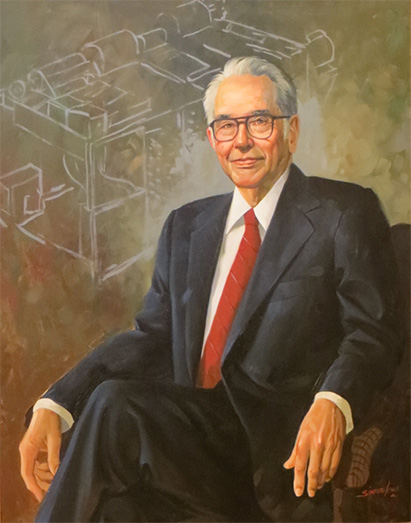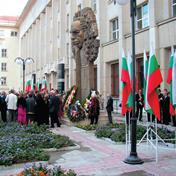|
International Conference Automatics and Informatics 2025 (ICAI'25)
Conference Record # 67591
Event Format: HYBRID (In-person and Virtual) Accepted papers will be submitted for inclusion into IEEE
Xplore Digital Library. All conference papers included in IEEE Xplore
will be indexed in the SCOPUS database.
October 09-11 2025
Varna, Bulgaria
Sponsored by: John Atanasoff Society of Automatics and Informatics
Technically supported by: Technical University of Varna, IEEE by Bulgarian section, Federation of the Scientific Engineering Unions .
Dear colleagues,
The review of all the papers submitted for participation in ICAI'25 has been completed.
The authors of the accepted papers have been notified.
- ICAI'25-Abstract book
Dear colleagues,
The review of all the papers submitted for participation in ICAI'25 has not yet been completed. If there is a decision of IPC to accept the papers, the authors will be informed immediately in person.
Review will continue beyond September 15, 2025 too.
All changes to the deadlines will be reflected here: http://icai-conf.org/index.php/en/deadlines
INVITATION
The International Conference Automatics and Informatics (ICAI) traditionally is held under the patronage of the President of the Republic of Bulgaria during the John Atanasoff days in October every year. The conference has over 55 years of history and has significantly contributed to the development of automation and computer technology in Bulgaria.
Since 2020 conference organizers are the John Atanasoff Society of Automatics and Informatics, Technical University of Varna, IEEE by Bulgarian section and Federation of the Scientific Engineering Unions in Bulgaria. The conference program for ICAI’25 includes: Plenary session, Invited symposia and Workshops, Scientific sessions, Young researchers school and Company presentations and Exhibitions.The purpose of the conference is to bring together international researchers and industrial practitioners interested in the development and implementation of modern technologies for automation, information, computer science, artificial intelligence and others.The organizing committee of the conference is inviting interested researchers and professionals to submit papers describing significant scientific achievements and innovations in all scientific areas of the conference.
DOWNLOAD CALL FOR PAPERS
Congratulations from the President of the Republic of Bulgaria
in Bulgarian
in English
Letter from the Presidency
in Bulgarian
in English PLENARY SESSION
 Machine learning methods for management of 5G networks Machine learning methods for management of 5G networks
Petia Georgieva
Abstract The goal of this talk is to introduce the Artificial Intelligence (AI) framework as a promising approach to deal with the next generation (5G+/6G) complex communication networks that are expected to embed a wide range of services and operations.
In the first part of the talk the most relevant machine learning and deep learning methods will be presented, such as Artificial Neural Networks (ANN) architectures suitable for time series processing and short/long term predictions.
The second part will summarise our experience in applying AI for 5G management in different scenarios.
Long Short Time Memory (LSTM) versus Gated Recurrent Unit (GRU) will be exemplified to forecast Key Performance Indicators (KPI) for cellular network traffic. Graph Convolutional Networks will be illustrated for dynamic connectivity prediction.
 Neural Computation for Socioeconomic Forecasting in Turbulent Times Neural Computation for Socioeconomic Forecasting in Turbulent Times
George Mengov
Abstract
Most computer methods in the social sciences traditionally rely on linear models. That approach has been justified by limited amounts of data, and by a need to capture reliably the mainstream trends. Over the last decades, however, the advent of versatile big data, powerful computing capabilities, and machine learning algorithms created vast new opportunities for analysis and deeper understanding of the socioeconomic reality. Neural networks have been at the forefront of this progress. Their ability to deal with noisy and imprecise data, alongside their modelling flexibility, makes them indispensable in the attempts to forecast business, economic, and social processes.
This talk presents a set of neural models successfully used in problems of macroeconomics, international trade, economic choice predictability, decision making under uncertainty, and human work motivation. All of these models implement results from mathematical neuroscience and are closer to the actual brain mechanisms than some widely used deep neural networks. Thus, it becomes possible to arrive at discoveries such as these: (1) When people take economic decisions in a virtual social network, they become more predictable by a neural model; (2) Forecasting by neural computation under economic shocks becomes as good as the best state-of-the-art econometric models; (3) In turbulent times, human work characteristics, attitudes, and dispositions remain stable; All the same, employees rethink unpredictably their commitment, loyalty, and in general – their relationship with their organization. For some of these findings a new computationally efficient, explainable, and novelty detecting neural network is used for the first time.
|





